Edge Electronics NL10.2 Amplifier and G2 Preamp
| Edge Electronics NL10.2 Amplifier and G2 Preamp |
| Edge of the Art? |
|
May 2011
|
|
|
It was the first day of the 2011 CES and T.H.E. Shows in Las Vegas and Clement Perry and I were covering the show together. I was really impressed with the Edge Electronics system at the T.H.E show which featured the NL 10.2 stereo amp and G2 preamp effortlessly powering the Acoustic Zen Crescendo loudspeakers. All the years I’ve been attending the CES I’ve always enjoyed the sound of the Edge electronics; this year was no different. I liked the sound so much that I told CP that it would be nice to listen to the Edge gear in the comfort of my own home. CP and I had a long talk with Steven Norber, one of the designers of the Edge electronics, about doing a review and he agreed to send me the show’s demo system.
Edge Electronics have been in business since 1987, designing and manufacturing reference-quality performance amplifiers. They now produce a full line of power amplifiers and line stages. They’re a low key manufacturer compared to companies such as Krell, Levinson and Audio Research, just to name a few. According to Norber, there has been a major evolution in the industry with respect to layout, materials and current distribution circuits, while the basic principles have remained constant.
The NL 10.2 is a powerful solid-state stereo amplifier. It produces 225-watts per channel into 8 Ohms (410 watts into 4 Ohms) utilizing the unique Edge proprietary Laser Optical Bias Circuitry. This innovative circuit incorporates a 630nm wavelength laser in each channel focused directly on the silicon substrate of the bias transistors. Edge describes it this way: “As the signal rises, the output of the laser increases and as the signal decreases the laser output falls. This keeps the bias at the optimum operating point allowing a tenfold increase in gain. The additional gain is achieved while maintaining signal integrity (linearity) at light speed, a first for solid state amplification”.
It’s a bipolar design input through output with hand matched NPN transistors. Tolerances are tighter than 1% with a symmetrical current sharing a circuit to maintain low crossover distortion. The NL 10.2 operates in class A/B and has crossover distortion specifications equal to a class-A amplifier. In addition, Edge takes advantage of the inherent linearity provided by identical transistors for each half of the waveform (an advantage unavailable to differently doped NPN/PNP complimentary types). The bipolar transistors are current driven devices that thrive on robust power supplies. The manufacturing quality is impeccable and fit and finish are excellent. The chassis is finished beautifully with ½” thick 6061 aluminum, designed to reduce microphonies and held together with marine grade stainless steel machine screws. Heat sinks are machined from a solid bar of 6061 to keep the transistors cool. They feature a wavy vertical look that really catches the eye. No detail is overlooked. Inside, where it counts most, Edge uses a pair of low leakage medical grade transformers that are housed in magnetic stainless steel enclosures and the Edge logo, engraved in script on the top cover, is both elegant and classy. It uses two toroidal transformers rated at 1000VA and has a total capacitance of 160,000uf of power supply filtration. The back panel is elegantly styled with CE approved speaker posts accepting only spade, and a 20amp IEC socket and On/Off switch. Available inputs include balanced (XLR) and unbalanced (RCA). On the front there is a lovely blue nameplate that is illuminated when the amplifier is powered on.
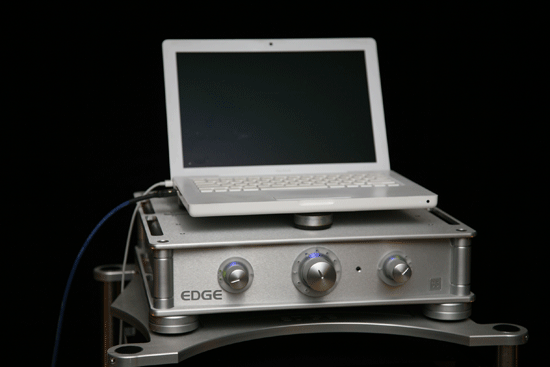
The G2 is an AC/DC linestage preamplifier that’s unique in that it can operate on AC voltage from the wall outlet or DC voltage from its internal gel batteries. The benefit of using the battery mode is that it is free from the noise and hash that are present on the AC lines. When in DC mode the audio/main transformer is switched off and the internal batteries supply all the voltage and current necessary to operate the audio section. To keep the signal as intact as possible the G2 only uses one relay in the signal path. The G2 uses only (RCA) unbalanced inputs to maintain the integrity of the original signal as much as possible through the use of fewer parts in the signal path. There is a lot of talk and debate concerning unbalanced versus balanced. Norber has asked on numerous occasions why Edge stays with RCA? This is his explaination: “The balanced has its place (particularly in professional audio), and If I was running 30 meter interconnects, a balanced circuit is not an unreasonable consideration, especially in area with high RF. We have incorporated balanced circuits into products we developed for other companies; however, insofar that speakers continue to use a two terminal connection, and the negative leg on a balanced connection must eventually see ground- our choice to emphasize and elegant, but not too simple RCA input is one we have proven to ourselves and others as one of greater purity. The fewer parts in the signal path; typically, the less the original signal will be changed.”
The G2 is beautifully finished in an aluminum chassis like the NL 10.2 except that it is lighter but still very sturdy. There are no markings on the front control knobs. It seems there’s a trend toward not putting labels on front panel controls. Another preamp I reviewed recently, the Valvet’s Soulshine linestage from Germany, didn’t have any markings either (I’m not absolutely sure at this point how I feel about this idea). The layout of the front panel is simple. On the left is the mode control knob with three positions that allow you choose from: 1) AC/charge battery (yellow light) middle position. While playing it also charges the batteries. 2) DC (green light) bottom position. Internal batteries power the audio circuit. And 3) Mute (no light) upper position. To the right is the source selector which allows you to select from four inputs and in the middle is the volume control. It comes with a solidly built aluminum volume remote control. Battery life is approximately one week after which batteries must be recharged.
The NL 10.2 and G2 replaced my reference Karan Acoustics combo (KSA 450 and reference dual mono MKII preamp). The NL 10.2 felt very heavy and weighed more than I would have expected for its size 19”D X 15”W x 9”H. After power lifting the NL 10.2 out of its box it looks less imposing and relatively small compared to the KSA 450. Don’t let the size fool you; it weighs 119 lbs and it’s a job for two people. The G2 was a breeze weighing only 26 lbs. When I unpacked it, I discovered the G2 accommodated only RCA input jacks. I contacted Franck Tchang from Acoustic Systems International and asked to borrow a pair of RCA interconnects. He responded quickly and soon I had some RCA cables delivered to me (thanks, Franck Tchang). As is my ritual, I let the Edge combo break-in for about a month, to be sure that they were in peak operating condition. As they logged more hours, they sounded better and better (Norber recommends about 400 hours of break-in period). The Edge combo drove my reference Consensus Audio Conspiracy loudspeakers smoothly and with authority. All the cablings for my reference system are ASI liveline except for the 20 amp power cord for the NL 10.2. I felt the NL 10.2 stock power cord would not give optimal results and that would be a sin to use a stock power cord for this caliber amplifier. I phoned Robert Lee from Acoustic Zen to borrow a power cord and thanks to him, in a week, I received the Gargantua II power cord. With the Gargantua II powering the NL 10.2 it was like getting a turbo boost; it took the NL 10.2 to another level. The music flowed more naturally in every way. The bass was better controlled, dynamics were smoother, and treble and midrange were more seductive.
After the long break-in period I was ready for some serious listening sessions. I had been very patient for a month or so, and finally I would get to hear what Edge is all about. All my listening was done with G2 in DC battery mode; it was quieter, with no hash and very smooth. It just sounded better. I started out listening to chamber music. Chamber music cannot match the sheer mass of sound or timbre variety of a large orchestral work; rather, it proceeds from a different premise, an intimate dialogue among equals that features a subtle, evenly balanced give and take among instruments. Listening to a small ensemble was very special as it was delicate and intimate. In the Classical period, which was highly appreciated for its clarity of thought and texture, chamber music experienced a golden age.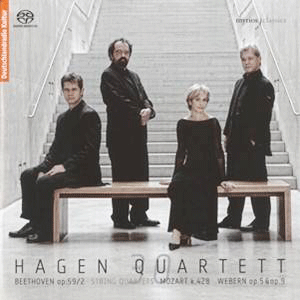 Listening to the beautiful box set recording of the Hagen Quartett’s rendition of Mozart: String Quartet was spectacular and sounded very natural. The String quartet in D major, K. 449 “Hoffmeister,” was rendered beautifully and the Edge combo was able to portray string timbres naturally. The timbre and tone of the strings sounded excellent with rich harmonics and overtones of the instruments. It moves you in an emotional way. The Edge combo lets you forget about the electronics and gets you involved deeply in the music. In my book, this is the way it should be. Don’t get me wrong, the Edge electronics are not what I would categorize as dark sounding. They were detailed and transparent without thickness or chestiness in the midrange. I enjoyed the music so much that one Saturday I spent the whole day just listening to the box set of Mozart.
Listening to the beautiful box set recording of the Hagen Quartett’s rendition of Mozart: String Quartet was spectacular and sounded very natural. The String quartet in D major, K. 449 “Hoffmeister,” was rendered beautifully and the Edge combo was able to portray string timbres naturally. The timbre and tone of the strings sounded excellent with rich harmonics and overtones of the instruments. It moves you in an emotional way. The Edge combo lets you forget about the electronics and gets you involved deeply in the music. In my book, this is the way it should be. Don’t get me wrong, the Edge electronics are not what I would categorize as dark sounding. They were detailed and transparent without thickness or chestiness in the midrange. I enjoyed the music so much that one Saturday I spent the whole day just listening to the box set of Mozart. 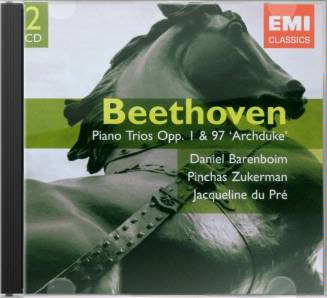 Another remarkable recording was of theBeethoven Piano Trio No.1 in E flat Op. 1 No.1 [EMI 3 50798 2 1] second movement Adagio cantabile was rendered outstandingly. It’s a special recording, and the three virtuosos are amazing, with Daniel Barenboim on piano, Pinchas Zukerman on violin and my favorite Jacqueline du Pre, on piano. You could listen over and over again without getting any fatigue. The piano, violin and cello sounded superb; they were detailed and transparent. Each instrument displayed rich harmonic structures that were superb.
Another remarkable recording was of theBeethoven Piano Trio No.1 in E flat Op. 1 No.1 [EMI 3 50798 2 1] second movement Adagio cantabile was rendered outstandingly. It’s a special recording, and the three virtuosos are amazing, with Daniel Barenboim on piano, Pinchas Zukerman on violin and my favorite Jacqueline du Pre, on piano. You could listen over and over again without getting any fatigue. The piano, violin and cello sounded superb; they were detailed and transparent. Each instrument displayed rich harmonic structures that were superb.
The NL 10.2 is very powerful with a big dynamic swing. It gave me the confidence of driving my loudspeakers as loudly as I wanted without losing any of the integrity of the music. The soundstage was another area that was very impressive; it was deep and wide and it extended beyond the speakers outer edges and far beyond my front listening wall. Complex recordings like symphonies held there composure solidly without breaking any sweat. There was no dynamic compression. 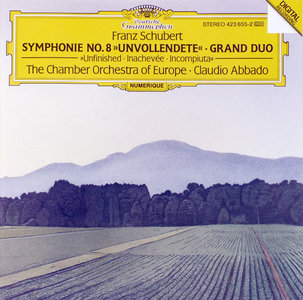 One of my favorite recordings is of Claudio Abbado conductingSchubert’s Symphony No.8 in B minor, D 759 “Unfinished” [DG 423 655-2]. It is very special and in an emotional way. The Edges were able to scale the dramatics of the full orchestra crescendos over and over with great ease. This romantic symphony was beautifully rendered by Edge electronics. You get so involved with the music that it was easy to forget that you’re listening to electronics. The orchestra filled the soundstage quite convincingly with all the instruments and let you listen deeply in a, trance-like mode to the recording. The Edge electronics sounded great but when I went back to my reference Karan KAL reference MKII preamp ($17k) and KAS 450 stereo amp ($27k), which are almost double the price of the Edge combo, I preferred the sound of the Karan. However, you won’t really notice until you compare them side by how good the Edge electronic really are.
One of my favorite recordings is of Claudio Abbado conductingSchubert’s Symphony No.8 in B minor, D 759 “Unfinished” [DG 423 655-2]. It is very special and in an emotional way. The Edges were able to scale the dramatics of the full orchestra crescendos over and over with great ease. This romantic symphony was beautifully rendered by Edge electronics. You get so involved with the music that it was easy to forget that you’re listening to electronics. The orchestra filled the soundstage quite convincingly with all the instruments and let you listen deeply in a, trance-like mode to the recording. The Edge electronics sounded great but when I went back to my reference Karan KAL reference MKII preamp ($17k) and KAS 450 stereo amp ($27k), which are almost double the price of the Edge combo, I preferred the sound of the Karan. However, you won’t really notice until you compare them side by how good the Edge electronic really are.
I really enjoyed my time with the Edge NL 10.2 stereo amp and G2 preamp immensely. These Edge Electronics are really remarkable products. I could easily live with the Edge combination because it lets me forget about the electronics and just think about the music. Isn’t that what we all want? If you are in the market for an amp and preamp in this price range, look no further. Or at least do yourself a favor and go listen to the Edge.

![]()
NL 10.2 Specifications
Chassis:1
Transformers:2
Number of Channels:2
Transformer Rating:2 x 1000 va
Total Capacitance: 160,000 uF
Power Rating into 8 Ohms:225 watts/channel
Output Impedance:.03 ohm
Constant Current Capacity:27.73 amps
Number of Lasers:2
Input Type:RCA
Approximate Weight:98 pounds
Dimensions:19″d x 15″w x 9″h
Price: $17,388.00
G2 Preamplifier Specifications
Battery operated true DC power supply
Specifications
Remote Volume: Yes
Transformers:
100 VA and 300 VA
Filter Capacitance: (2) 28,000 uF
Gain: 21 dB
Slew Rate: 100 volt uS
Input: RCA type
Output Impedance: 50 ohm
Frequency Response: 5 Hz-300,000Hz =/- 0.1 dB
Distortion: 0.005%
Intermodulation Distortion: 0.007%
Approximate Weight: 69 pounds
Dimensions: 17.5″d x 15″w x 7.5″h
Price: $5,898.00
Company Info:
Edge Electronics, 140 W. North Street, Kirkland, IL 60146 Denver, Colorado Sales
Phone: 815.522.6200 Phone: 303.722.6967
Fax: 815.522.3100 Email: sales@edgeamps.com
Email: support@edgeamps.com
Website: www.edgeamps.com
![]()
Don’t forget to bookmark us! (CTRL-SHFT-D)
Stereo Times Masthead
Publisher/Founder
Clement Perry
Editor
Dave Thomas
Senior Editors
Frank Alles, Mike Girardi, Russell Lichter, Terry London, Moreno Mitchell, Paul Szabady, Bill Wells, Mike Wright, and Stephen Yan,
Current Contributors
David Abramson, Tim Barrall, Dave Allison, Ron Cook, Lewis Dardick, John Hoffman, Dan Secula, Don Shaulis, Greg Simmons, Eric Teh, Greg Voth, Richard Willie, Ed Van Winkle, Rob Dockery, Richard Doran, and Daveed Turek
Site Management Clement Perry
Ad Designer: Martin Perry


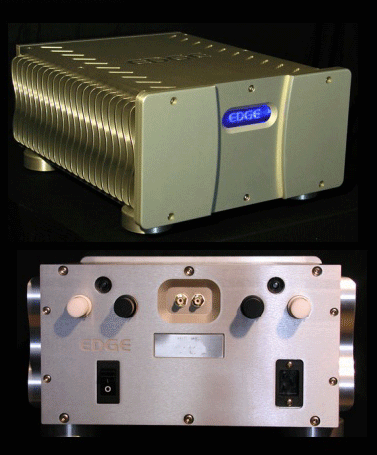
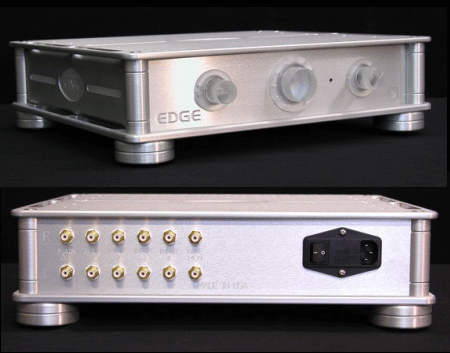


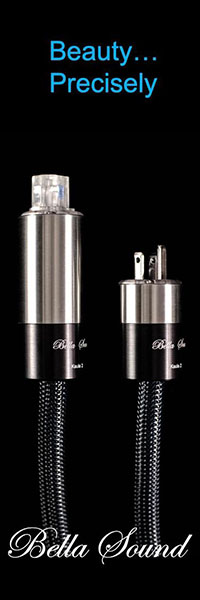
Be the first to comment on: Edge Electronics NL10.2 Amplifier and G2 Preamp